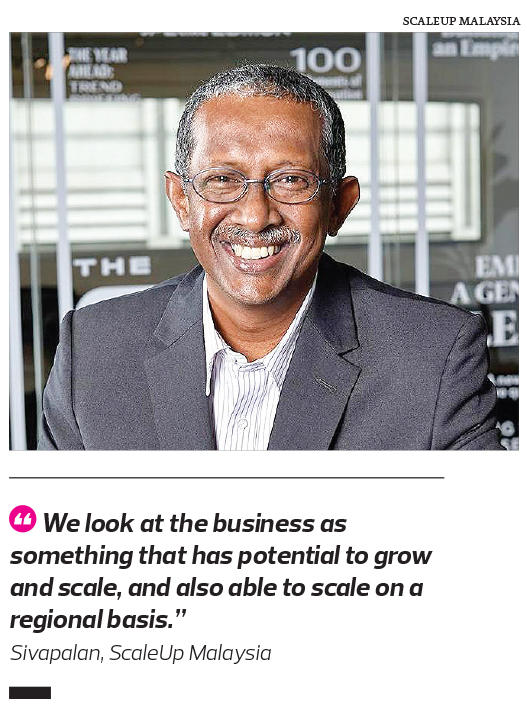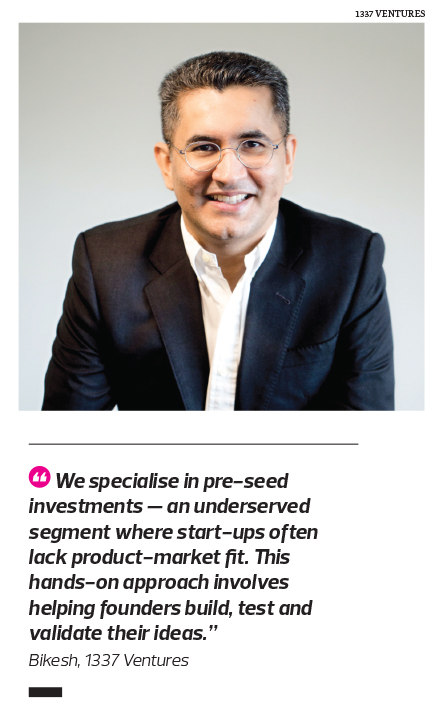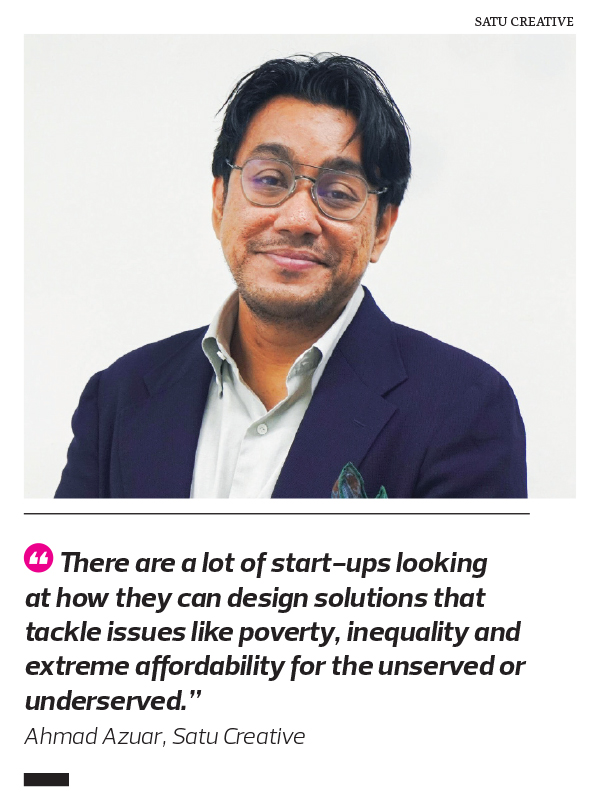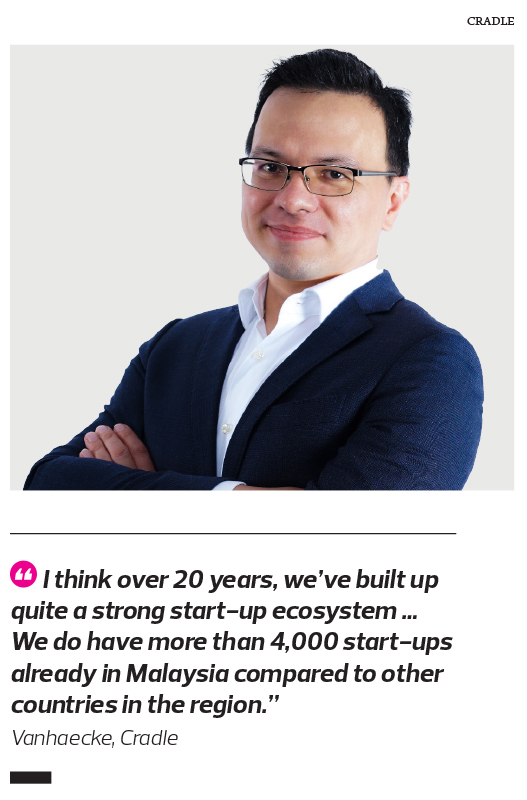
This article first appeared in Digital Edge, The Edge Malaysia Weekly on December 30, 2024 - January 12, 2025
Malaysia’s start-up ecosystem has seen a surge of support through various initiatives aimed at nurturing early-stage companies and helping them thrive in competitive markets. Key players, both government-led and private, have stepped up efforts to provide funding, resources and strategic guidance, ensuring these fledgling businesses can innovate and scale effectively.
A pivotal player in this ecosystem is Cradle Fund Sdn Bhd, established in 2003 under the Ministry of Finance and now reporting to the Ministry of Science, Technology and Innovation (Mosti).
Cradle acts as a catalyst for start-up growth, funding innovation-driven tech start-ups with high-growth potential. Currently, it offers two active grant programmes: CIP Spark, an ideation grant providing up to RM150,000, and CIP Sprint, a grant of up to RM600,000 for start-ups in the early commercialisation stage.
“One of Cradle’s key mandates is, apart from the roadmap, the strategic and more execution type of mandates in terms of early-stage funding for start-ups and capacity building,” says Cradle group CEO Norman Matthieu Vanhaecke.
To simplify access to resources, Cradle launched the MYStartup Single Window in April, a comprehensive platform that consolidates all funding opportunities, programmes and incentives available across government agencies.
“MYStartup Single Window encompasses anything and everything about the Malaysian start-up ecosystem. What is on offer, not just in terms of funding, but also in terms of programmes and other initiatives and incentives that are available,” says Vanhaecke.
“We are developing the second and third phases as well. So more features are going to be added very soon. Apart from the single window, MyStartup will also have other programmes meant for start-ups, namely MySetup Bootcamp, MyStartup Pre-Accelerator and Accelerator programmes.”
Beyond Cradle, ScaleUp Accelerator Sdn Bhd focuses on scaling businesses with regional potential. Over five years, ScaleUp Malaysia has invested in 39 companies.
ScaleUp invests by putting about US$100,000 into companies and taking a minority stake of almost 10%, as part of its belief that founders must have a large stake in their businesses. This is reflected in how it only invests in companies where the owners are willing to learn and have the right attitude of wanting to build a successful company over purely making profit.
“We look at the business as something that has potential to grow and scale, and also able to scale on a regional basis. Malaysia is very small-funded, so if it’s the kind of business that cannot scale outside Malaysia, then it is unlikely that we can build a very large business and exit successfully,” says Dr Sivapalan Vivekarajah, co-founder and senior partner of ScaleUp Malaysia.
Additionally, ScaleUp looks into businesses based on business owners and their attitude towards growth and working alongside accelerators to follow the guidelines available. In terms of exit strategies, ScaleUp’s fund runs for seven years, so it must be able to sell its shares in the company by then to fund other projects.
Social enterprises such as Satu Creative support the ecosystem by providing start-ups with the resources and networks needed to refine their business models. CEO Ahmad Azuar Zainuddin stresses the importance of cultivating innovation that meets market needs, especially with transformative technologies like artificial intelligence (AI) reshaping industries. To accommodate this, Satu Creative runs accelerators, helping start-ups develop their business model and understand the funding landscape.
Flourishing technologies and tools to scale
Malaysia’s business landscape already has established industries such as palm oil, oil and gas, and semiconductor. All these are ripe for advancement and technological innovations, and the country can capitalise on not just growing their business but having unique innovative offerings both locally and internationally.
Vanhaecke says the question that Cradle asks itself is how Malaysia can get these established industries to that next point. “For Cradle, looking into deep technology to innovate and transform these industries is what can help local businesses stand out in the global market.”
However, local businesses should not just jump into developing solutions based on trending technologies like AI as it will put them at risk of losing what makes Malaysian companies unique.
This is why funding organisations like Cradle and ScaleUp focus on businesses driven by strong leaders with a clear vision. Using the AI example, Vanhaecke notes how the focus should instead be on the development of AI itself, the language model that makes it up and how to use its applications uniquely.
“We have to be there and be with, or even ahead of the pack, so when you look regionally, because I hear some other developments of new tech in the area, I think Malaysia can be really early to the scene, or even lead,” he says.
While many funding policies and grants, including those offered by Cradle, are designed to be industry-agnostic, the rise of advanced technologies like fintech and AI has shifted the focus towards tech start-ups, particularly those offering unique and innovative solutions.
One such example is Impact, a fintech company backed by ScaleUp. It developed an aggregated payment platform that simplifies the process of paying for various services, such as Astro subscriptions, phone bills and even exchange-traded funds. This innovative approach showcases the types of solutions that attract funding in Malaysia’s evolving start-up ecosystem.
Filling in the gaps
As agencies like Cradle and ScaleUp explore new ways to support local start-ups, fresh funding channels are emerging. These include expanded grants, venture capital investments and other innovative avenues.
These efforts aim to bridge the funding gaps start-ups often face, particularly those deemed too high risk for traditional banks.
“The bigger picture here is the advancement of the Malaysian start-up ecosystem. But what’s larger than that is actually to create an innovation-led economy for the country, for the benefit of the country and its people,” says Vanhaecke.
For Cradle, funding has to be very strategic, especially when it comes from the public coffers. So the funds it receives have to go towards supporting what the ecosystem is lacking. Right now, that is early-stage start-ups due to their inherently high-risk nature.
Vanhaecke says Cradle is also trying to encourage more private parties to come in and help fund the start-up ecosystem. Not just angel investors, but through other means like equity crowdfunding.
“They are already out there, but it is not enough. Compared to other ecosystems, globally, we are a bit behind in terms of early-stage funding. So we see it as imperative that we need to be able to plug this gap as much as we can,” he says.
Still, Cradle remains cautious and critical when approving grants. Vanhaecke notes how the process for grants can be stringent, but credits this stringent nature to the success rate it has had with its funded start-ups.
However, for venture capital firm 1337 Ventures CEO Bikesh Lakhmichand, this stringent nature should be made more streamlined to prevent bureaucratic delays and some gaps from being bridged. An example he gave was funding gaps in research and development-heavy industries like biotech and green tech, due to their long gestation periods but high impact potential.
This is why the venture capital market is a vital resource for the start-up ecosystem, bringing not just additional funds but expertise and mentorship to prospective start-ups.
The Malaysian Venture Capital Roadmap was rolled out in April, aiming to increase the penetration rate to between 0.25% and 0.35% by 2030 and the number of venture capital funds by between 15% and 25% from 116 in 2022.
Sivapalan concurs that there have never been enough venture capital funds in Malaysia. Since 2019, he has been working to grow its influence and believes that when it comes to early-stage funding for venture capital, especially seed funding, there is still a gap to be filled.
1337 Ventures is one of the venture capital firms filling this gap, with accelerator programmes and platforms aimed at democratising access to entrepreneurial resources for start-ups in Malaysia and across Southeast Asia. It has adopted a digital-first approach that ensures a consistent pipeline of start-ups, targeting innovations in fintech, healthtech and automation solutions.
“We specialise in pre-seed investments — an underserved segment where start-ups often lack product-market fit. This hands-on approach involves helping founders build, test and validate their ideas,” says Bikesh.
Moving forward
From Ahmad Azuar’s perspective, based on insights gained from Satu Creative’s early-stage accelerator programmes, the future of growing start-ups will increasingly focus on sustainability. This includes addressing critical challenges such as climate change, food security and safety, reflecting a shift towards long-term, impactful solutions.
“We do see a lot of interest in start-ups adopting AI to tackle these issues, [which] will allow them to be more efficient, more precise in how they offer their solutions. Beyond that, there are a lot of start-ups looking at how they can design solutions that tackle issues like poverty, inequality and extreme affordability [for the unserved or underserved],” he says, highlighting growth areas like fintech, education and healthcare.
Ahmad Azuar observes the start-up ecosystem maturing as both the public and private sectors increasingly recognise its significance. The government has shown an improved understanding of the support start-ups require, while larger companies in the private sector are beginning to appreciate the role start-ups play as hubs of innovation and drivers of value creation.
However, a key challenge remains: the ability of start-ups to provide viable exit opportunities for initial investors. Cradle stresses that addressing this issue requires cultivating a more active and robust investment landscape in Malaysia, ensuring start-ups can attract sustained funding and offer competitive returns to investors.
“We’re working with different parties, like pitchIN’s PSDX, an exchange for crowdfunded companies, while not to the point of like a Bursa Malaysia listing, it at least gives start-ups the opportunity to list their equity crowdfunding shares for the next buyer, offering an exit,” says Cradle’s Vanhaecke.
He is excited about what is to come in the year ahead. Based on the government’s efforts, he sees the recognition that start-ups are important to create an innovation-led economy.
With Malaysia taking on the chairmanship of Asean, Cradle will play a pivotal role in driving regional start-up initiatives. It has been tasked with leading the Asean Start-up Initiative, while Mosti will chair the National Secretariat of the Asean Committee on Science, Technology, and Innovation (Costi).
Cradle has ambitious plans and key deliverables for the coming year. These include launching an Asean centralised start-up portal, implementing capacity development programmes and rolling out innovation-focused initiatives, all aimed at fostering collaboration and growth in the regional start-up ecosystem.
“It will be a very big year for us next year, all our programmes, the grants will continue, and the GLC innovation programme as well,” says Vanhaecke.
“I think over 20 years, we’ve built up quite a strong start-up ecosystem … We do have more than 4,000 start-ups already in Malaysia compared to other countries in the region. Of course, Singapore is probably higher, but we have one of the highest numbers of start-ups.”
Government-led digitalisation initiatives are critical to fostering a tech-savvy ecosystem. While most start-ups target the private sector, leveraging government adoption of local solutions can create robust case studies and credibility.
This is in contrast to the common concerns Sivapalan has heard in the market, of how the government has too many grants and support for start-ups. To both he and Vanhaecke, there is not enough.
“Every country in the world provides grants. If you go to the US, there are 200 different types of grants available … the most mature economy in the world still provides [grants],” says Sivapalan.
Instead, the amount of government assistance should increase to encourage more digitalisation among local companies, though he understands the struggle with budget restrictions. As a whole, he believes government assistance is on the right track.
Bikesh concurs and hopes that there is further collaboration between parties for the ecosystem to grow. “Malaysia needs to invest in developing deep-tech capabilities and fostering a culture of collaboration between start-ups, corporates and academia. We have yet to see robust university-industry partnerships,” he says.
“While funding plays a role, it’s the synergy between knowledge, infrastructure and execution that drives global competitiveness. Early-stage research and development funding is limited. We must enhance grants for experimental technologies and ensure seamless commercialisation pathways through public-private partnerships.”
Save by subscribing to us for your print and/or digital copy.
P/S: The Edge is also available on Apple's App Store and Android's Google Play.
- FBM KLCI down 4.17% to more than two-year low on global trade war woes
- Asian stock benchmarks drop most in 14 years on tariff concerns
- China has already trade-war-proofed its economy
- Trump team rejects market fears, shows defiance on tariffs
- Malaysia should not panic, rush into decisions over US tariffs, says Amir Hamzah
- Britain eases electric vehicle sales targets for automakers
- Asian stock benchmarks drop most in 14 years on tariff concerns
- Yen, Swiss franc jump in volatile trade as global recession fears grow
- Anwar: Tackle issues effectively to avoid exploitation by irresponsible parties
- Alternative Views: After tariff tantrum, watch out for currency wars




